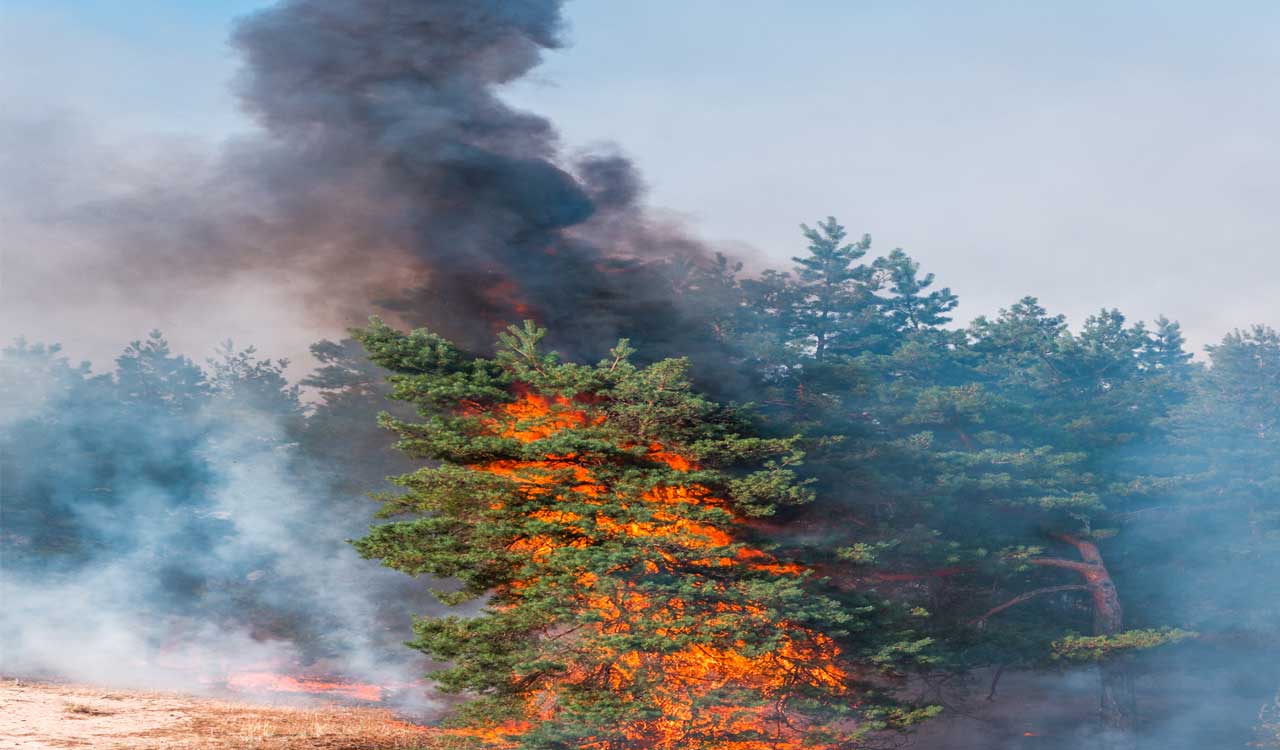Defensive mechanism: Trees hold their breath
When wildfire smoke fills the air, doctors advise people to stay indoors to avoid inhaling harmful particles and gases. But what about trees and other plants that can't seek shelter?

When wildfire smoke fills the air, doctors advise people to stay indoors to avoid inhaling harmful particles and gases. But what about trees and other plants that can’t seek shelter? Interestingly, some trees react similarly to humans by closing off their openings and essentially holding their breath.
In the fall of 2020, during a severe wildfire season in the western US, researchers observed thick smoke passing through a field site in the Rocky Mountains of Colorado. They measured the leaf-level photosynthesis of Ponderosa pines and discovered that the trees had completely closed their pores, resulting in nearly zero photosynthesis.
The researchers also checked the leaves’ emissions of their usual volatile organic compounds and found very low levels, indicating that the leaves were not “breathing.” They weren’t taking in the carbon dioxide needed for growth nor releasing their usual chemicals.
Surprised by these findings, the researchers attempted to restart photosynthesis by altering the leaves’ temperature and humidity. This intervention cleared the leaves’ “airways,” leading to a sudden improvement in photosynthesis and a burst of volatile organic compounds.
The data collected over months revealed that some plants respond to heavy wildfire smoke by shutting down their exchange with the outside air, effectively holding their breath. However, they still experience some exposure to the smoke before this shutdown occurs.
- Tags
- breath
- photosynthesis
- Trees
Related News
-
Save future of Telangana NEET PG aspirants, IMA writes to CM Revanth Reddy
28 mins ago -
Telangana techie loses Rs 4.15 lakh to online gold trading fraud
58 mins ago -
Hyderabad: Couple working as house help at doctor’s residence held for theft
1 hour ago -
Hyderabad auto driver foils attempt to kidnap young woman, five held
2 hours ago -
Haiti gang attack on journalists covering hospital reopening leaves 2 dead, several wounded
3 hours ago -
21 dead as Mozambique erupts in violence after election court ruling
4 hours ago -
Cartoon Today on December 25, 2024
11 hours ago -
Sandhya Theatre stampede case: Allu Arjun questioned for 3 hours by Chikkadpallly police
12 hours ago



